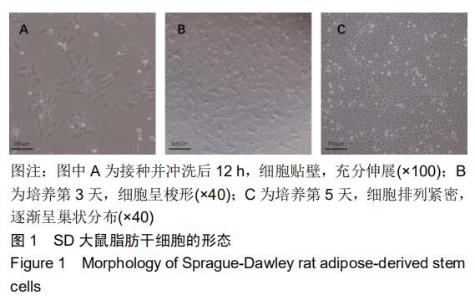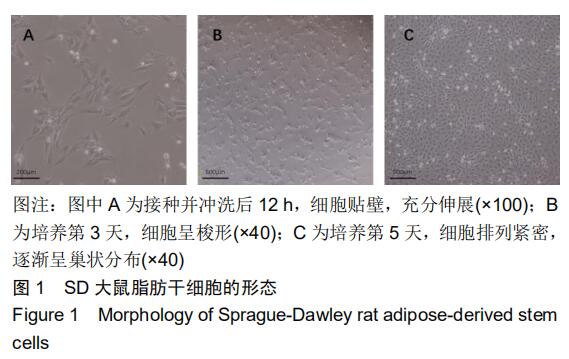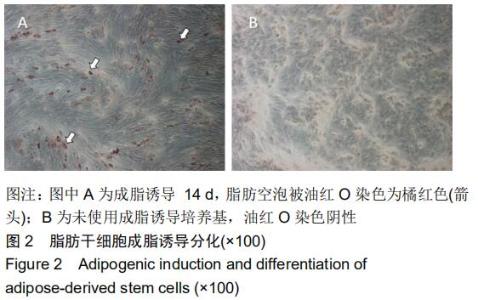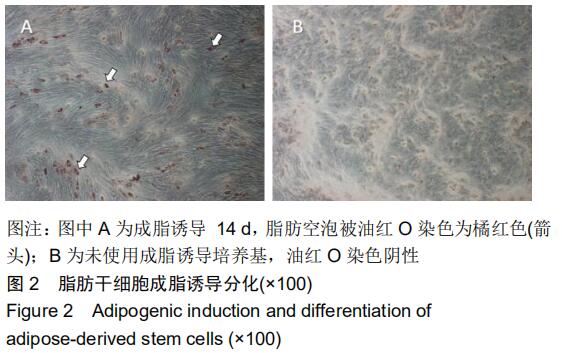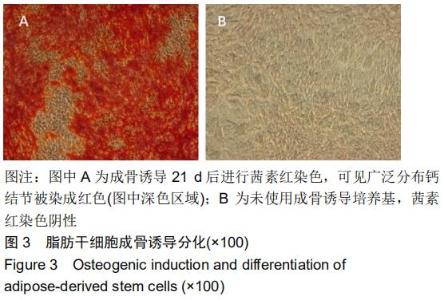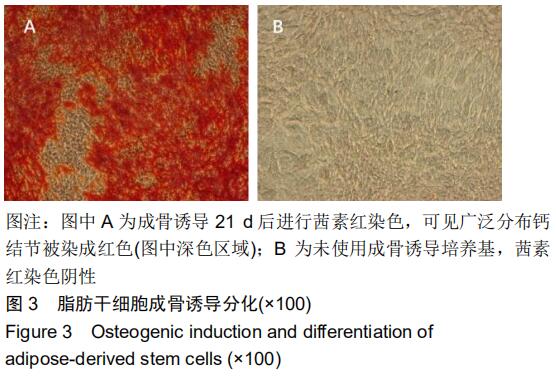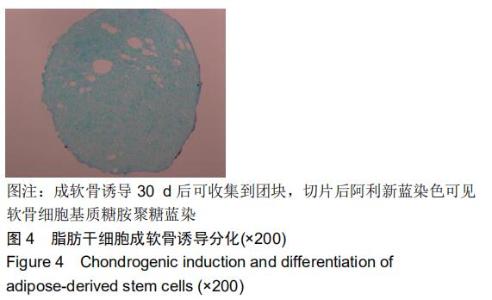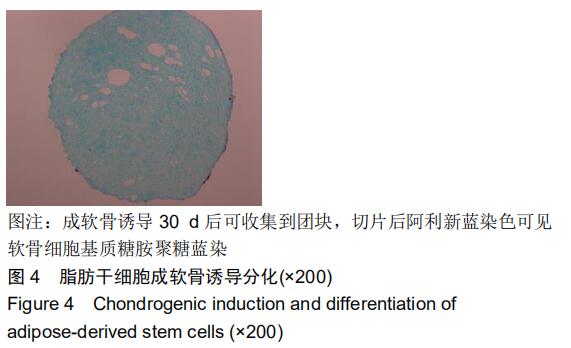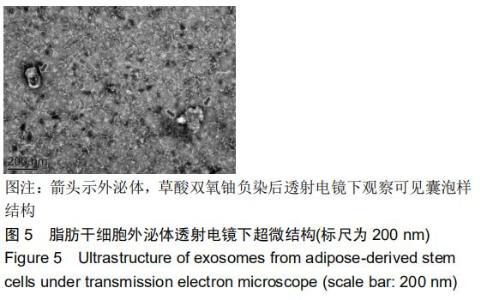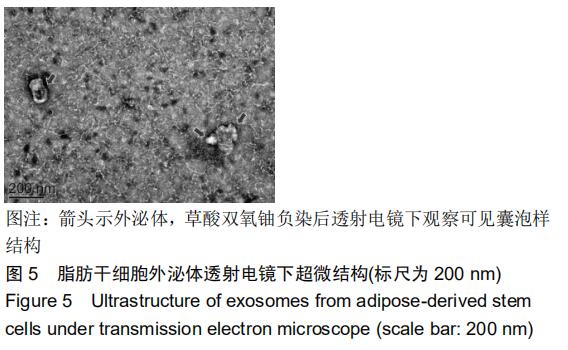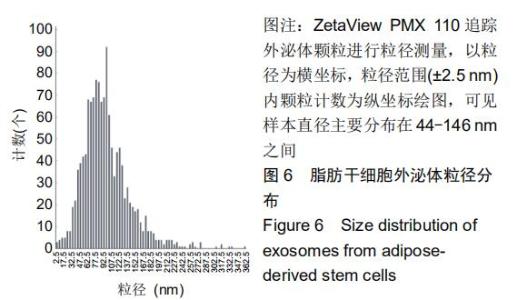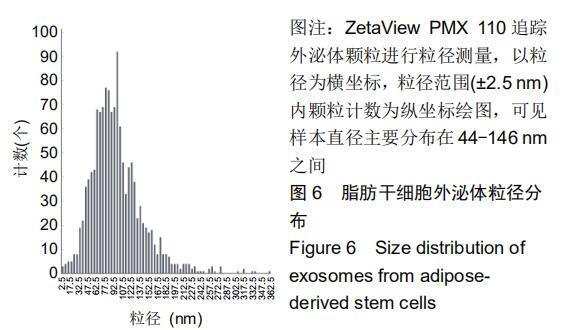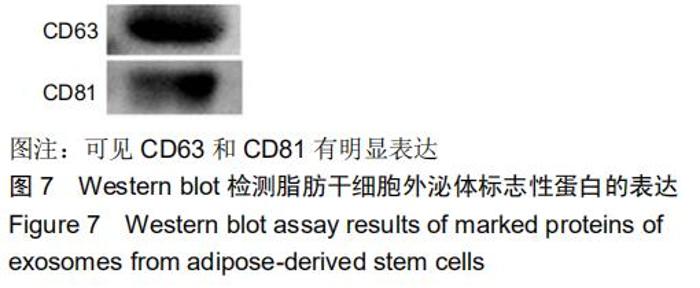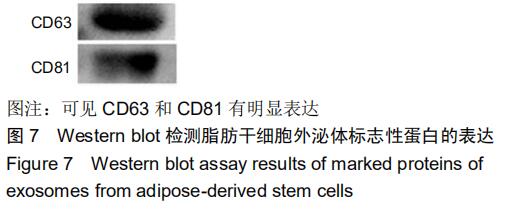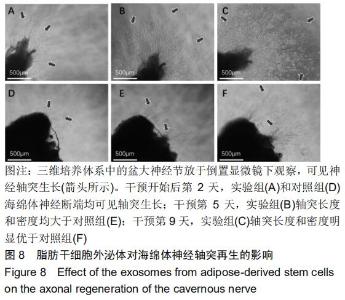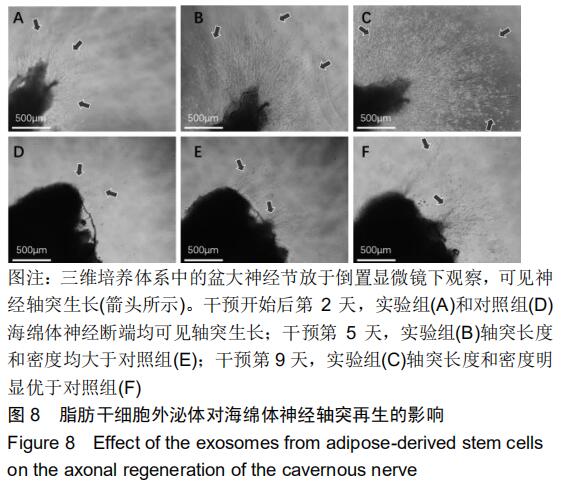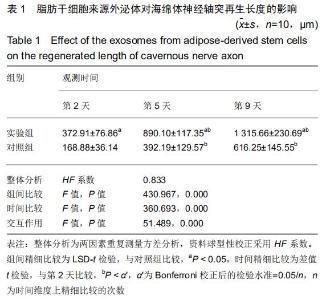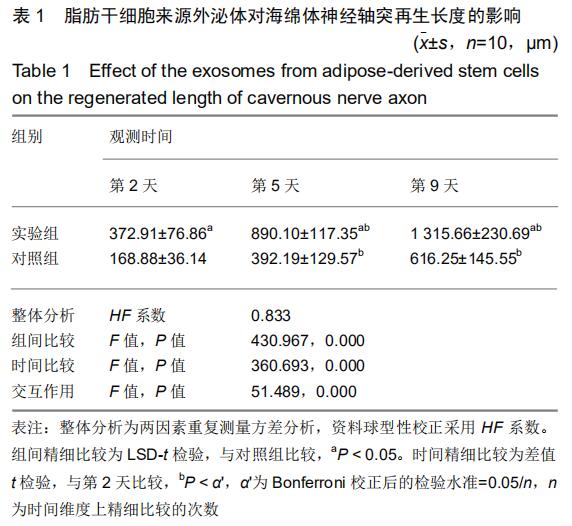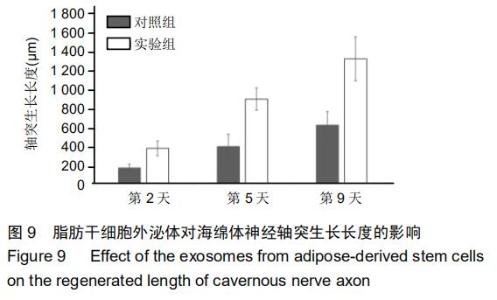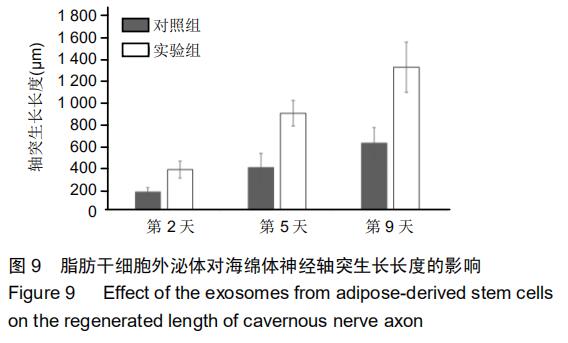|
[1] 张新华,胡礼泉,陈坚.海绵体神经损伤与阴茎勃起功能障碍[J].中华泌尿外科杂志,2002,23(11):702-703.
[2] HAGLIND E, CARLSSON S, STRANNE J, et al. Urinary Incontinence and Erectile Dysfunction After Robotic Versus Open Radical Prostatectomy: A Prospective, Controlled, Nonrandomised Trial. Eur Urol. 2015;68(2):216-225.
[3] FU Q, SUN X, TANG C, et al. An assessment of the efficacy and safety of sildenafil administered to patients with erectile dysfunction referred for posterior urethroplasty: a single-center experience. J Sex Med. 2012;9(1):282-287.
[4] BARILE L, VASSALLI G. Exosomes: Therapy delivery tools and biomarkers of diseases. Pharmacol Ther. 2017;174:63-78.
[5] SUZUKI E, FUJITA D, TAKAHASHI M, et al. Therapeutic Effects of Mesenchymal Stem Cell-Derived Exosomes in Cardiovascular Disease. Adv Exp Med Biol. 2017;998:179-185.
[6] ZHANG B, WANG M, GONG A, et al. HucMSC-Exosome Mediated-Wnt4 Signaling Is Required for Cutaneous Wound Healing. Stem Cells. 2015;33(7):2158-2168.
[7] TOH WS, LAI RC, HUI JHP, et al. MSC exosome as a cell-free MSC therapy for cartilage regeneration: Implications for osteoarthritis treatment. Semin Cell Dev Biol. 2017;67:56-64.
[8] WU P, ZHANG B, SHI H, et al. MSC-exosome: A novel cell-free therapy for cutaneous regeneration. Cytotherapy. 2018;20(3):291-301.
[9] KESHTKAR S, AZARPIRA N, GHAHREMANI MH. Mesenchymal stem cell-derived extracellular vesicles: novel frontiers in regenerative medicine. Stem Cell Res Ther. 2018;9(1):63.
[10] HONG P, YANG H, WU Y, et al. The functions and clinical application potential of exosomes derived from adipose mesenchymal stem cells: a comprehensive review. Stem Cell Res Ther. 2019;10(1):242.
[11] REN R, TAN XH, ZHAO JH, et al. Bone marrow mesenchymal stem cell-derived exosome uptake and retrograde transport can occur at peripheral nerve endings. Artif Cells Nanomed Biotechnol. 2019; 47(1):2918-2929.
[12] SHIUE SJ, RAU RH, SHIUE HS, et al. Mesenchymal stem cell exosomes as a cell-free therapy for nerve injury-induced pain in rats. Pain. 2019;160(1):210-223.
[13] BELLA AJ, LIN G, CAGIANNOS I, et al. Emerging neuromodulatory molecules for the treatment of neurogenic erectile dysfunction caused by cavernous nerve injury. Asian J Androl. 2008;10(1):54-59.
[14] MULHALL JP, MORGENTALER A. Penile rehabilitation should become the norm for radical prostatectomy patients. J Sex Med. 2007; 4(3):538-543.
[15] NANGLE MR, KEAST JR. Reduced efficacy of nitrergic neurotransmission exacerbates erectile dysfunction after penile nerve injury despite axonal regeneration. Exp Neurol. 2007;207(1):30-41.
[16] LIN G, BELLA AJ, LUE TF, et al. Brain-derived neurotrophic factor (BDNF) acts primarily via the JAK/STAT pathway to promote neurite growth in the major pelvic ganglion of the rat: part 2. J Sex Med. 2006;3(5):821-829.
[17] PODLASEK CA, MEROZ CL, TANG Y, et al. Regulation of cavernous nerve injury-induced apoptosis by sonic hedgehog. Biol Reprod. 2007; 76(1):19-28.
[18] CANGUVEN O, BURNETT A. Cavernous nerve injury using rodent animal models. J Sex Med. 2008;5(8):1776-1785.
[19] CHO MC, SONG WH, PAICK JS. Suppression of Cavernosal Fibrosis in a Rat Model. Sex Med Rev. 2018;6(4):572-582.
[20] WANG R. Penile rehabilitation after radical prostatectomy: where do we stand and where are we going? J Sex Med. 2007;4(4 Pt 2): 1085-1097.
[21] GUR S, ABDEL-MAGEED AB, SIKKA SC, et al. Advances in stem cell therapy for erectile dysfunction. Expert Opin Biol Ther. 2018;18(11): 1137-1150.
[22] CHEN S, ZHU J, WANG M, et al. Comparison of the therapeutic effects of adipose‑derived and bone marrow mesenchymal stem cells on erectile dysfunction in diabetic rats. Int J Mol Med. 2019;44(3): 1006-1014.
[23] MATZ EL, TERLECKI R, ZHANG Y, et al. Stem Cell Therapy for Erectile Dysfunction. Sex Med Rev. 2019;7(2):321-328.
[24] ALBERSEN M, KENDIRCI M, VAN DER AA F, et al. Multipotent stromal cell therapy for cavernous nerve injury-induced erectile dysfunction. J Sex Med. 2012;9(2):385-403.
[25] GÓMEZ-GUERRA LS, ROBLES-TORRES JI, GARZA-BEDOLLA A, et al. Erectile dysfunction treated with intracavernous stem cells: A promising new therapy? Rev Int Androl. 2018;16(3):119-127.
[26] 郭子宽. 间充质干细胞及其临床应用中的几个问题[J].中国组织工程研究, 2012,16(10):1-10.
[27] VAKALOPOULOS I, MEMMOS D, MYKONIATIS I, et al. Stem cell therapy in erectile dysfunction: science fiction or realistic treatment option? Hormones (Athens). 2018;17(3):315-320.
[28] ZHU LL, HUANG X, YU W, et al. Transplantation of adipose tissue-derived stem cell-derived exosomes ameliorates erectile function in diabetic rats. Andrologia. 2018;50(2):e12871.
[29] OUYANG X, HAN X, CHEN Z, et al. MSC-derived exosomes ameliorate erectile dysfunction by alleviation of corpus cavernosum smooth muscle apoptosis in a rat model of cavernous nerve injury. Stem Cell Res Ther. 2018;9(1):246.
[30] LI M, LEI H, XU Y, et al. Exosomes derived from mesenchymal stem cells exert therapeutic effect in a rat model of cavernous nerves injury. Andrology. 2018;6(6):927-935.
[31] NI J, LI H, ZHOU Y, et al. Therapeutic Potential of Human Adipose- Derived Stem Cell Exosomes in Stress Urinary Incontinence - An in Vitro and in Vivo Study. Cell Physiol Biochem. 2018;48(4):1710-1722.
[32] NEWTON WC, KIM JW, LUO JZQ, et al. Stem cell-derived exosomes: a novel vector for tissue repair and diabetic therapy. J Mol Endocrinol. 2017;59(4):R155-R165.
[33] ANDERSSON KE, HEDLUND P, ALM P. Sympathetic pathways and adrenergic innervation of the penis. Int J Impot Res. 2000;12 Suppl 1:S5-12.
[34] DOBBS R, CHOE S, KALMANEK E, et al. Peptide amphiphile delivery of sonic hedgehog protein promotes neurite formation in penile projecting neurons. Nanomedicine. 2018;14(7):2087-2094.
[35] LIN G, CHEN KC, HSIEH PS, et al. Neurotrophic effects of vascular endothelial growth factor and neurotrophins on cultured major pelvic ganglia. BJU Int. 2003;92(6):631-635.
[36] PASHOUTAN SARVAR D, SHAMSASENJAN K, AKBARZADEHLALEH P. Mesenchymal Stem Cell-Derived Exosomes: New Opportunity in Cell-Free Therapy. Adv Pharm Bull. 2016;6(3):293-299.
[37] SHABBIR A, COX A, RODRIGUEZ-MENOCAL L, et al. Mesenchymal Stem Cell Exosomes Induce Proliferation and Migration of Normal and Chronic Wound Fibroblasts, and Enhance Angiogenesis In Vitro. Stem Cells Dev. 2015;24(14):1635-1647.
[38] BUCAN V, VASLAITIS D, PECK CT, et al. Effect of Exosomes from Rat Adipose-Derived Mesenchymal Stem Cells on Neurite Outgrowth and Sciatic Nerve Regeneration After Crush Injury. Mol Neurobiol. 2019; 56(3):1812-1824.
[39] 魏俊吉,陈云飞,薛春玲,等.间充质干细胞来源的Exosome对神经损伤的保护作用[J].中国医学科学院学报,2016,38(1):33-36.
[40] SHAO L, ZHANG Y, LAN B, et al. MiRNA-Sequence Indicates That Mesenchymal Stem Cells and Exosomes Have Similar Mechanism to Enhance Cardiac Repair. Biomed Res Int. 2017;2017:4150705.
[41] KALRA H, SIMPSON RJ, JI H, et al. Vesiclepedia: a compendium for extracellular vesicles with continuous community annotation. PLoS Biol. 2012;10(12):e1001450.
|
